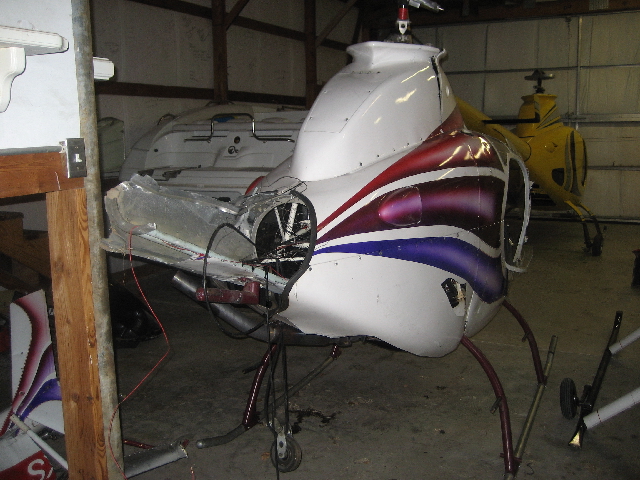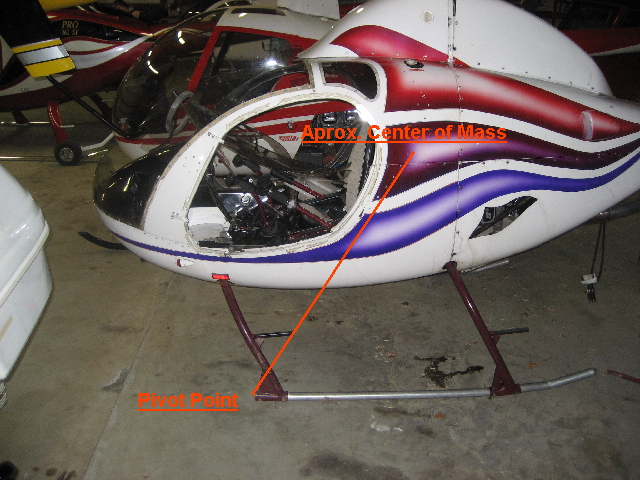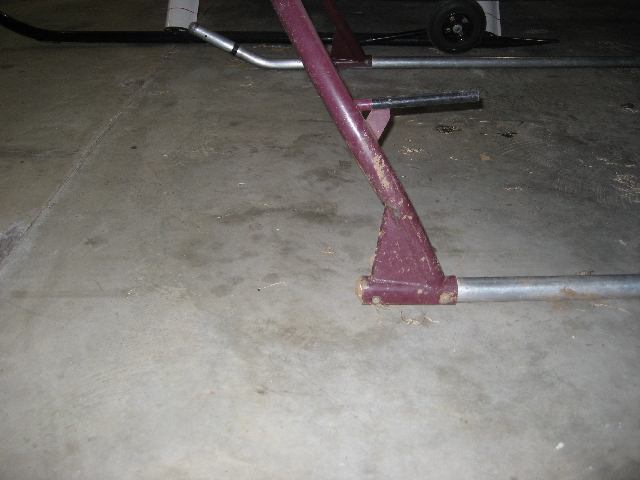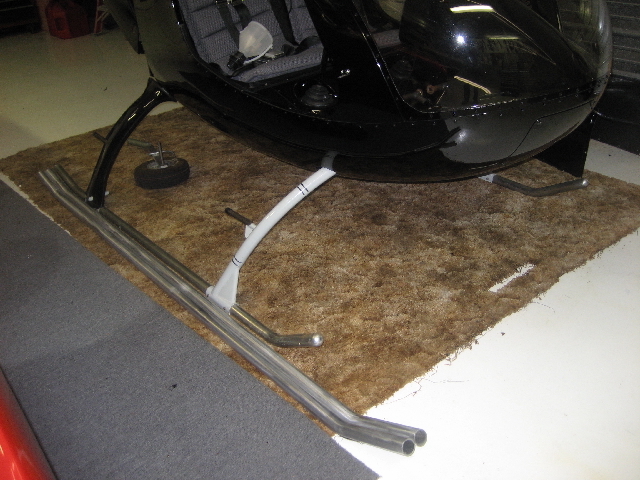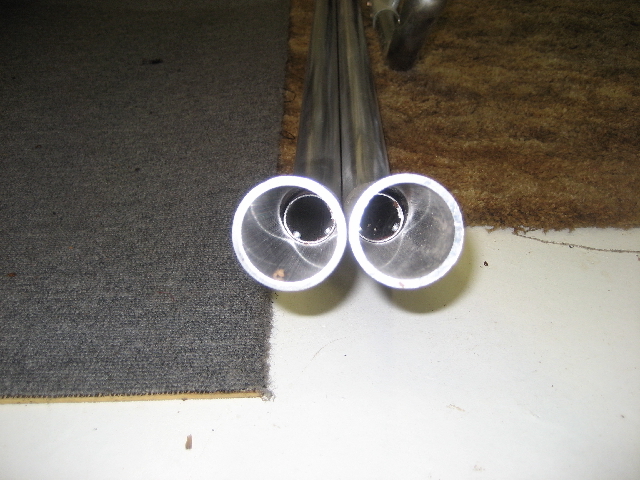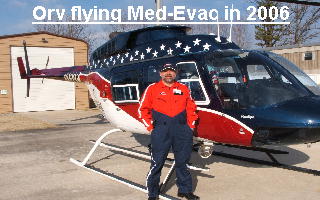 |
HINTS AND TIPS The Buttons below will take you through the different hints and tips that I feel will make your helicopter safer and more reliable. |
In my over 5000 hours instructing and flying Rotorway helicopters, I have found that the most effective safety modification that you can make to your Rotorway helicopter is to install the longer reinforced aluminum skids with SS skid shoes!! The Exec, Exec 90, and Exec 162F landing gear have proven to offer minimal protection for the helicopter in the case of a run-on landing without power. This can occur at the conclusion of an autorotation following a power loss to the rotor system. The reasons for this are listed here. 1. The aluminum skids do not come with low friction skid shoes. The aluminum on the surface contact area of the skids grabs concrete and asphalt causing the helicopter to lurch forward placing the weight of the helicopter onto the front of the skids. Below is a pair of VPHelo, LLc extended skids with Stainless Steel skid shoes.
2. The stock skids do not extend out to the front of the helicopter far enough to offer adequate support. 3. The left skid is not reinforced at all. In a typical autorotation landing with forward ground speed on surface contact with a high-friction surface such as concrete or aphalt, the weight of the helicopter is transferred onto the front of the skids. Those forces are then concentrated back to the weakest point which is the skid attach bolt hole on the front landing gear shoe. The left skid often snaps off at that front landing gear hole 4. When the skid snaps off the front landing gear shoe becomes the new pivot point over which the center of mass of the helicopter rotates forward until the main rotor blades make contact with the ground leading to a rollover and substantial damage to the helicopter. In the photo below a Rotorway Exec 90 is shown flying with the stock short skids. Note how far back the left landing gear shoe is on the skid. |
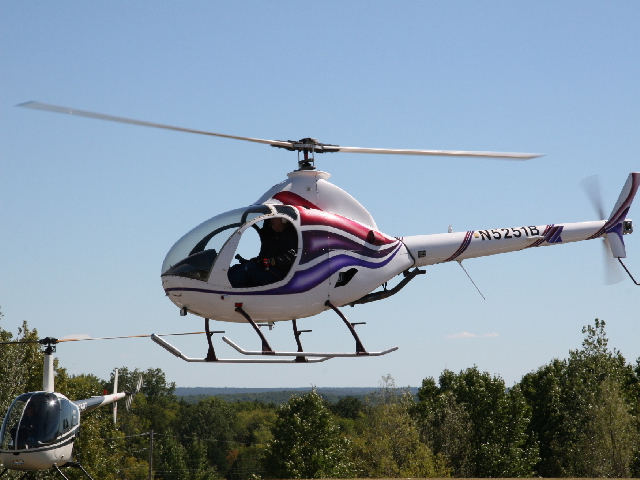 |
In the photo below, the same helicopter is shown following an autoroation landing on an open piece of ground. The helicopter rocked forward onto it's short unreinforced skids as the pilot pulled full aft cyclic causing the main rotor blades to sever the tail boom.
|
As the weight of the helicopter was transferred to the front of the left skid, the skid snapped off at the bolt hole in the front landing gear shoe.
|
The above and below photos shows where the front left landing gear shoe dug into the ground becoming the pivot point over which the helicopter rotated forward.
|
So how can you keep this from happening to your beautiful Rotorway helicopter? One way is to never fly it. A more practical solution is to implement a very effective modifiaction that Orv came up with some eight years ago. It is not rocket science, it is common sense. If you extend the landing system support forward you will have more support when you need it. The further forward that support is extended, the less likely the helicopter will be able to rotate up and over that new extended pivot point. This is accomplished by: 1. Flipping the front landing gear leg around 180 degrees so that the gear runs forward from the frame attach point. There are no modifications needed, just unbolt the landing gear, remove it, switch the right gear for the left and left for the right, and bolt it back onto the frame. This alone brings the landing gear support forward by close to 20 inches. 2. Installing a set of extended reinforced aluminum skids to the landing gear in it's new forward position. The longer skids are reinforced by inserting a piece of 4130 chromoly steel tube into each skid before the front of the skid is bent. This steel reinforcement carries the weight of the helicopter forward from the new landing gear shoe position (already 20" forward from the stock configuration) all the way up through the bend at the front of the landing skids. The steel insert tube runs back completely through the landing gear shoe so that both bolts that attach the skid pass through both the longer skid and the steel reinforcing tube. This effectively gives over 3' of additional forward support to the helicopter landing gear system so that it is there when you need it. 3. The final part of the new landing system is to install low frictin stainless steel skid shoes to the underside of the skids with the front shoe following up around the front bent of the skids. With the new system, both skids now offer over 3' of additional forward support for the helicopter and a low friction sliding surface where the skids make surface contact with the ground. |
The above photo shows the VPS, LLc steel reinforced aluminum skids sitting next to a set of standard Rotorway 162F skids before they are installed. The below photo shows the steel insert that goes from the rear of the front skid shoe all the way forward through the bend at the front of the landing skids.
|
As a final comparison, we have drawn lines from the center of mass of a Rotorway 162F to the pivot points, the red illustrating the location of the pivot point on the stock skids and the green showing where the new pivot point is with the VPS, LLc skids installed.
Which landing system
do you want protecting your investment? |
You can also visit the VPS, LLc web site by clicking the below link: |

